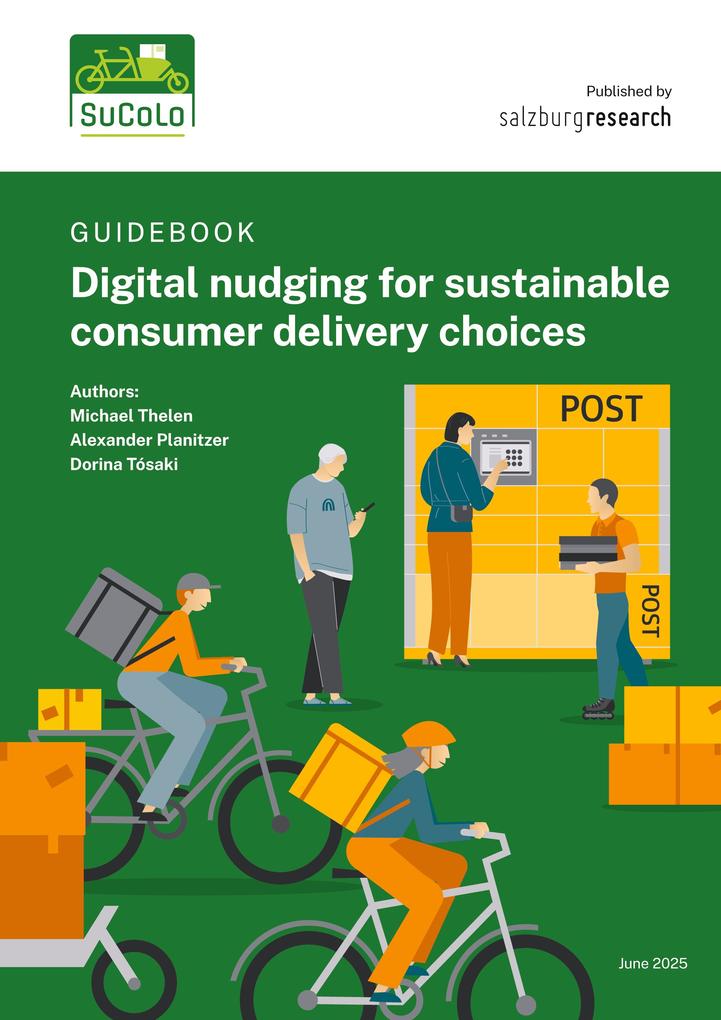
Zustellung: Sa, 28.06. - Di, 01.07.
Versand in 2 Tagen
VersandkostenfreiBestellen & in Filiale abholen:
Local policy-makers and regulators (e. g. , city representatives) and logistics providers are faced with the challenge of promoting sustainable logistics in order to reduce CO2 emissions, improve air quality, reduce noise, alleviate traffic congestion and make suburban and urban areas more livable. However, the use of supply-side measures (e. g. , the procurement of clean delivery vehicles) must be accompanied by aligned demand-side measures to promote, encourage and incentivise consumers to choose these options when it is offered to them. In the context of online shopping, such demand-side measures can take the form of digital nudges on online shops to subtly guide shoppers to choose the sustabinable delivery option (which operate without restrictions or bans). A certain level of infrastructure (e. g. , cargo bikes, pick-up stations and parcel lockers) need to be there for people to use it, however, understanding and fostering the public's personal capabilities and motivations is also paramount.
The purpose of this guidebook is to provide a comprehensive, actionable approach to designing digital interventions that promote sustainable consumer delivery choices on e-commerce sites. Drawing on the latest behavioral science models, such as the COM-B Model (Michie et al. , 2011), and offering step-by-step guidance on applying digital nudging, this guidebook aims to empower you to craft effective behavior change campaigns. By applying the insights and tools within, the guidebook seeks to support the creation of more sustainable, efficient, and consumer-friendly logistics system.
This guidebook was produced as part of the SuCoLo project, which has been funded by the Austrian Federal Ministry of Climate Action, Environment, Energy, Mobility, Innovation and Technology under the Driving Urban Transitions Partnership, which has been co-funded by the European Union under grant agreement no. 905465. Further information on the project can be found at https://sucolo. eu/.
The purpose of this guidebook is to provide a comprehensive, actionable approach to designing digital interventions that promote sustainable consumer delivery choices on e-commerce sites. Drawing on the latest behavioral science models, such as the COM-B Model (Michie et al. , 2011), and offering step-by-step guidance on applying digital nudging, this guidebook aims to empower you to craft effective behavior change campaigns. By applying the insights and tools within, the guidebook seeks to support the creation of more sustainable, efficient, and consumer-friendly logistics system.
This guidebook was produced as part of the SuCoLo project, which has been funded by the Austrian Federal Ministry of Climate Action, Environment, Energy, Mobility, Innovation and Technology under the Driving Urban Transitions Partnership, which has been co-funded by the European Union under grant agreement no. 905465. Further information on the project can be found at https://sucolo. eu/.
Produktdetails
Erscheinungsdatum
20. Juni 2025
Sprache
englisch
Auflage
1. Auflage
Seitenanzahl
36
Autor/Autorin
Michael Thelen, Alexander Planitzer, Dorina Tósaki
Verlag/Hersteller
Produktart
kartoniert
Gewicht
136 g
Größe (L/B/H)
297/210/3 mm
ISBN
9783819248580
Entdecken Sie mehr
Bewertungen
0 Bewertungen
Es wurden noch keine Bewertungen abgegeben. Schreiben Sie die erste Bewertung zu "Guidebook: Digital Nudging for Sustainable Consumer Delivery Choices" und helfen Sie damit anderen bei der Kaufentscheidung.









